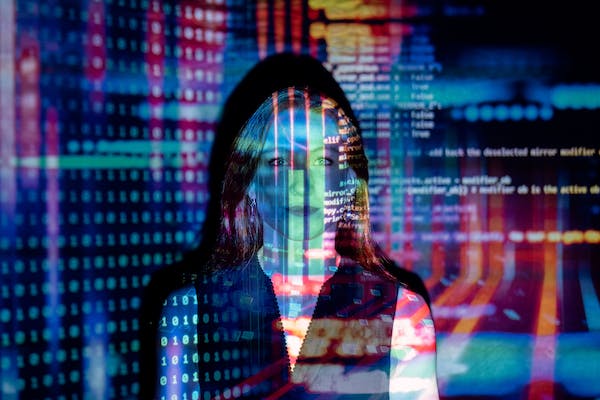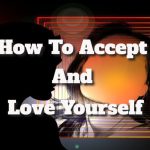How to Make Art with Machine Learning Programmes
The creative landscape is shifting quickly as AI technologies become more widely available. Artificial intelligence has made it possible to produce stunning graphics that truly wow viewers.
In this piece, we'll examine how AI has affected the creative process, how the underlying technology works, and how to make art using AI programmes.
So, shall we?
The Impact Of Artificial Intelligence On Art
Artificial intelligence (AI) has completely changed the process of making and experiencing art. The usage of AI helps people discover uncharted artistic territory and express themselves in completely original ways. AI has had a wide-ranging effect on the creative process, from simplifying repetitive chores to opening minds to new possibilities.
The use of AI technologies to rapidly produce visuals that were previously only feasible through manual labour also contributes to a more intuitive user experience.

Understanding AI Technologies For Art Creation
1. Generative Adversarial Networks
GANs employ two neural networks, a generator and a discriminator, to produce works of art. An picture is generated by the former and judged by the latter in the discriminator network. The generator's job is to produce fake photos that fool the discriminator into thinking they're real. This is how GANs learn to create new pictures based on previous ones.
Applications for GANs range from inventing new artistic styles to making realistic facial animations. They can be used to create works of art in a particular style, such Impressionism or Cubism, or to generate random faces with a variety of characteristics. They have also been used to combine two distinct artistic styles into a one image and to re-create well-known artworks digitally.
GANs are trained by providing both networks with sets of real images; this allows them to “learn” from one another and improve their ability to generate realistic images. Once the generator network has been trained, it can be used to produce new pictures using what it has learned from the dataset it was given.
Using GANs, digital art may be created efficiently without the help of a human artist. This makes them great for jobs like effectively producing a huge volume of artwork or letting artists experiment with new concepts without spending much effort on each drawing.
2. Neural Style Transfer
Combining the subject matter from one image with the aesthetics of another is called “Neural Style Transfer,” and it is a deep learning approach. This method, which may also be used for “stylizing” or “transforming” a picture, is highly versatile and can be applied to a broad variety of aesthetic goals. It's possible to give a portrait the aesthetic quality of an impressionist painting or to give a landscape the aspect of a classical painting.
Visual components from two photos are extracted and combined to produce a third image with characteristics from both original images. The first step is to extract relevant information from the input images. Colour, texture, line, and form are all examples of visual features. After this, the attributes from both photos are blended to form a new image with characteristics from both.
Neural Style Transfer relies on convolutional neural networks (CNNs) to extract and merge relevant information from the input photos into the final product. Each input picture is sent through a convolutional neural network (CNN) that has already been trained to extract feature maps. The algorithm then tweaks a number of settings to decide how much information from each input image should be utilised to generate the target image. Parameters including colour balance, contrast, and texture are refined with each iteration until an aesthetically attractive outcome is achieved.
Whether you're working with images or paintings, Neural Style Transfer may take your creations to the next level. Users can quickly generate art that combines their vision with existing works of art by leveraging the power of machine learning algorithms and CNNs, allowing them to create unique pieces that would not be possible without spending hours manually recreating artwork or manipulating photographs in graphic design software applications like Photoshop.
3. Deep Dream
Deep Dream is an AI programme that may be used to make new works of art from preexisting ones. It creates distorted representations of visuals (called “dreams”) using convolutional neural networks. The image is modified by Deep Dream to highlight existing elements and to introduce new, previously invisible ones.
If a picture has clouds in it, Deep Dream could make them more realistic by adding stars to them. It can also identify forms in patterns and highlight such features while minimising others. The process can provide fantastical, one-of-a-kind visuals that inspire novel works of art and provide new avenues for artistic expression.
4. Variational Autoencoder (VAE)
Virtual artistic environments (VAEs) are an AI-powered tool for creating art that uses deep learning and generative models to generate novel, one-of-a-kind pieces. VAEs employ trained neural networks to produce original and innovative artwork, as opposed to more traditional approaches like painting or sketching.
The heart of any VAE is its encoder and its decoder. The picture or data set is sent into the encoder, which transforms it into a latent space vector; the decoder then uses this vector to produce a new image. The latent space vector connects the original work to the produced version, therefore the process may be regarded of as a “translation” from one picture to another.
In order to encode information, a neural network is trained to create a representation for each data point based on those features. In order to properly create pictures with comparable features when given a fresh piece of data, it must be trained with examples to recognise patterns, forms, colours, etc. You may train it on a landscape painting, and it might produce an abstract interpretation of landscapes based on what it knows.
The decoder then employs this data in conjunction with user-defined parameters to generate fresh visuals by playing about with these settings until the desired effect is obtained, whether it through the addition of textures or a reshuffling of colours. In this approach, users may have complete editorial freedom over their created works while yet discovering untapped potential inside those works.
The Steps To Creating Art With AI Tech Are As Follows
It's not as hard or scary to make art with AI as you would think. Following a simple procedure, anybody may use AI to make original and engaging works of art..
Step 1 – Preparation and Selection of the Dataset
The initial stage is to organise and choose the data that will be utilised to train the AI model. Different datasets may be utilised to create various styles of art. For instance, an artist can consult a collection of such works as a source of ideas to produce abstract works of art. When creating artwork with AI technologies, it's important to use high-resolution, high-quality photos.
Step 2 – AI Model Training
After a suitable dataset has been collected and organised, an AI model may be trained. The goal is to train the model to provide new results based on the input data it has been given. Many artificial intelligence models (described above) may be employed depending on the nature of the artwork being made.
Step 3 – Generating Art using the AI Model
After an AI model has been trained, artists may use it to generate new works. Each piece of generated art will be one-of-a-kind since it will have been produced utilising a separate collection of data and an individual AI model.
Step 4 – Enhancing the Output
Finally, the artwork may be improved by incorporating aspects from other works or adding other colors/shapes, if desired.
Following these guidelines, anybody may use AI programmes to make original and engaging works of art.
Latest Revolutionary AI Art Tools
1. DALL·E 2 by OpenAI
DALLE 2 is a state-of-the-art artificial intelligence programme that can create works of art from text. This advanced AI system takes textual inputs and an image recognition system and outputs original, high-quality artwork in a matter of seconds.
In DALLE 2, users may write in words or phrases to have a variety of artworks created in response. The algorithm has been trained with hundreds of photographs, so it can quickly and reliably recognise the features of the target subject or scene and generate convincing compositions. Using this potent tool, people have drawn everything from landscapes to portraits, and the results are shockingly sophisticated and precise.
2. Midjourney
Midjourney provides an AI programme that does the same thing as OpenAI's DALL-E by creating visuals based on textual descriptions. Its technology is hypothesised to be stable dissemination. Users may generate pictures by chatting with Midjourney's Discord bot.
Users may make incredible artwork with just a few words of description. This Midjourney requires you to have a Discord account. To have Midjourney make an image, simply type /imagine on Discord, then provide a description of what you want to see.
The bot will provide four distinct pictures in response to your query. The delivery of your findings will take some time.
Conclusion
AI's introduction into the field has profoundly affected how humans produce and interpret art. Now that artificial intelligence software is readily available, artists may produce stunning pictures that were previously out of their reach. In this post, we have looked at the many forms of artificial intelligence and the processes involved in making art with them.
We may anticipate further developments in the field of artificial intelligence in art in the years to come. Thank you for reading, and I hope you found the information here to be useful. Leave a comment and tell me what you think.
References:
https://starryai.com/blog/how-to-create-art-using-ai
https://aiartists.org/ai-generated-art-tools
https://analyticsindiamag.com/online-tools-to-create-mind-blowing-ai-art/
https://www.youtube.com/watch?v=uapdILWYTzE
The Article How to Use AI Tools to Create Art First Appeared ON
: https://ad4sc.com
The post How to Use AI Tools to Create Art appeared first on https://gqcentral.co.uk


